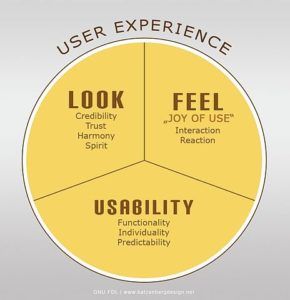Unfortunately, most of the time Hospital Pharmacies spend evaluating new technology solutions focus on features and ROI (costs vs. benefits), ignoring the evaluation of how the solution will actually be implemented. As a result, Hospital Pharmacies often buy solutions, only to have the implementation end up being a nightmare. This results in a budget stretched by overtime pay and other unexpected costs. In the worst case scenario, this bad initial experience puts a dark cloud over the entire initiative, with organizational buy-in, effective process realignment and product optimization as the victims.
3 Considerations that Will Ensure a Successful Implementation
Having planned and participated in hundreds of hospital technology implementations over the last decade at both small stand-alone hospitals as well as IDN-wide roll outs, I’ve learned a few things along the way. Here are 3 dimensions that you should consider during your next technology evaluation project to ensure that the solution (and partner) you choose results in a successful implementation.
1. Implementation Methodology
When evaluating potential vendors, ask about their implementation methodology and flexibility. How complicated is it to configure the system and how much time will that require of your staff? Can some (or all) of the setup and training be done remotely and at-will? A little flexibility can pull a lot of the work from the hectic days of the actual go-live into the comparatively calm days of the planning phase. Not only that, but greater choice in the way you go live can allow staff to use their natural “flex” time to complete the tasks needed of them (e.g. setup, configuration, training), reducing the number of activities during the actual go-live window. This means less overtime and fewer disruptions to day-to-day operations. Lastly, this approach also allows users to get their hands on the solution earlier in the process, so that the plan can be built on actual experience rather than a theoretical understanding of how the solution will work in your pharmacy.
2. User Experience
The term “User Experience” has been used so much it hardly has any meaning anymore. At its simplest, user experience is just “how easy and/or pleasant a solution is to use,” and it’s wildly important, not just for the software but for the entire lifecycle of the product, including implementation, upgrades and pre- and post-sales support. A solutions with a poor user experience may still work well within the prescribed workflow, but require more time to configure, manage and upgrade, which means more training, longer times to complete tasks and eventually frustrated staff. Anyone who has been through this knows frustrated staff will start to avoid the solution as much as they can, meaning you’re not seeing the return on investment you got it for in the first place. If it’s bad enough, pretty soon you’re seeking out a new vendor.

Thing is, user experience is tough to measure during an evaluation process. Some of things I would recommend looking for in order to make sure it’s central to that vendor’s philosophy; is the sales rep responsive to your questions regarding ease-of-use? Are they able to educate you on the pros and cons of different settings and methods of using the product, or is most of their time spent saying negative things about their competitors? Do they have training programs that work for your busy staff – webinars, online modules and configurable print materials? Who is going to help you after the go-live? Are there account managers? Is support available over the phone, chat and email? Are there self-service materials for folks who would like to solve their own problems? These all add up to the complete, lifecycle ease of use, which is more than just the right buttons in the right places.
3. Partner Ecosystem
No company can be the best at everything. And if a vendor doesn’t think about the impact their solution will have on the broader organization, and the other systems and processes inside of it, guess who will? You. So it’s critical you choose a vendor with the supporting ecosystem to meet not just your immediate needs, but one you can grow with over time. Does the vendor have partnerships that can provide accessories that make the solution easier to use or fit into the constraints of your physical space? Do your existing suppliers offer versions of their products that work with the solution you are considering purchasing? Does the solution integrate with the existing systems you have in place? These are often ultimately more important than what you liked best in the sales demo, so make sure you’re thinking (and asking) about the entire package.
Don’t Skip the Implementation
Price and features drive most purchasing decisions and although both of those criteria are critical, failing to evaluate how easy or difficult a solution will be to deploy is often when the seed gets planted that blooms into a failed implementation and/or huge cost overruns. There is no single answer as to what will make an implementation a success but, if you take the time to consider implementation methodologies, focus on user experience and partner ecosystems, you will greatly increase your chances of success.
If you would like to learn more about how the Kit Check Flex Deploy approach has lead to deployments that can be done in less than a day while still maintaining one of the highest customer satisfaction ratings in the industry or if you have new ideas on how to minimize the organizational costs of implementing new technology while increasing success, please email me at nick@kitcheck.com.
